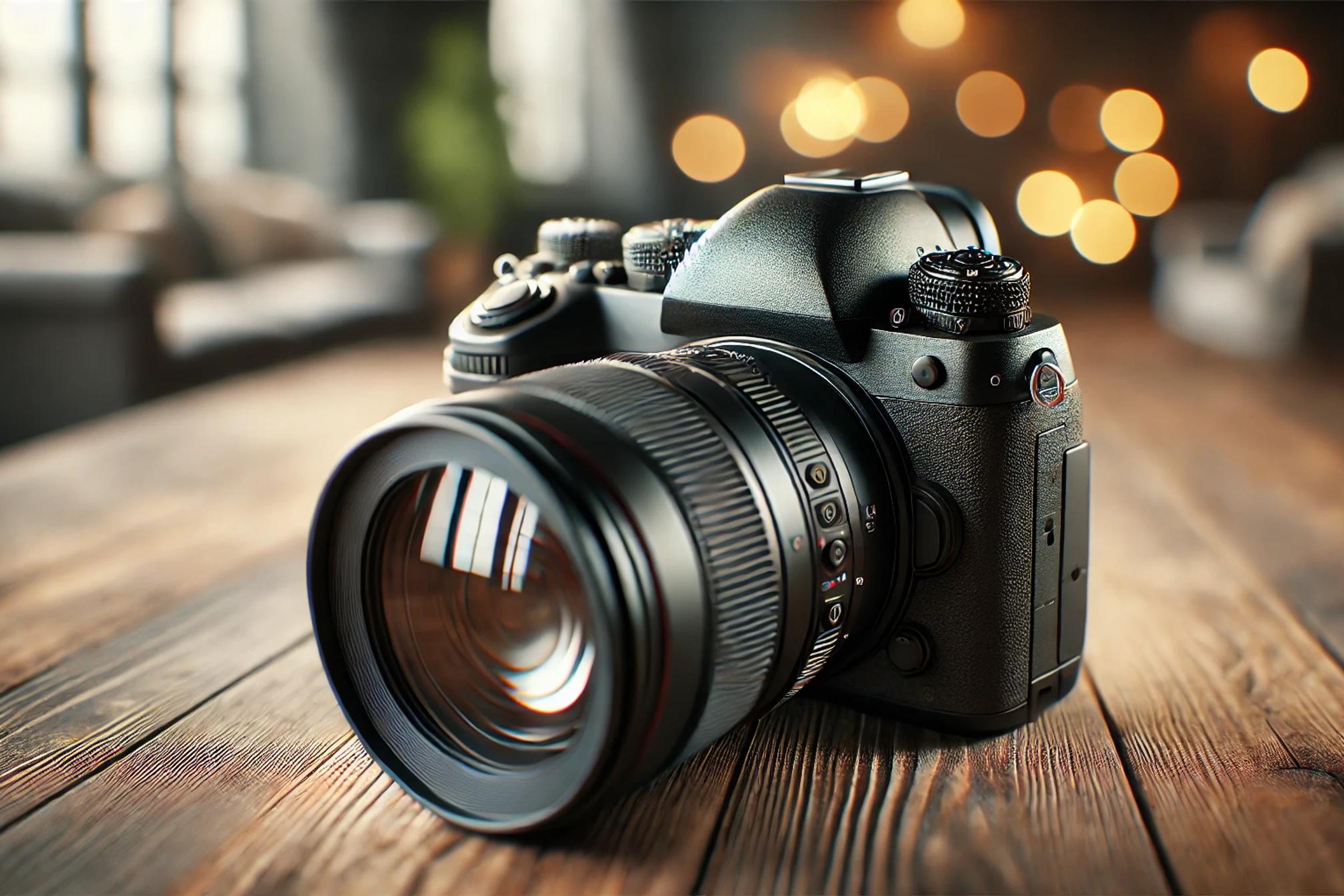Friday, February 21, 2025
The Best SD Cards and Storage Options for Different Types of Cameras


TL;DR (Recommendations)
- UHS-II: SanDisk 128 GB Extreme Pro
- CFexpress: SanDisk Extreme PRO 512GB CFexpress
- CFast 2.0: SanDisk Extreme PRO 128GB CFast 2.0
- microSD: SanDisk 256GB High Endurance
- SSD: SanDisk 2TB Extreme Portable SSD
## Check your cameras user guide for compatibility ##
1. DSLR and Mirrorless Cameras
Best Memory Type: SD Cards (UHS-II or CFexpress)
DSLRs and mirrorless cameras are widely used for both photography and videography, requiring memory cards that balance speed, reliability, and affordability.
- SD Card UHS-I and SD Card UHS-II: Most mid-range DSLRs and mirrorless cameras use SD cards, with UHS-II cards offering significantly faster write speeds compared to UHS-I. A UHS-II SD card with a V90 rating (Video Speed Class) is ideal for 4K video recording.
- CFexpress Type A and CFexpress Type B: Higher-end mirrorless cameras like Sony’s Alpha series and Canon’s R5 utilize CFexpress cards, which provide extreme read/write speeds crucial for high-resolution images and 8K video recording.
Recommended Specifications:
- Minimum 128GB capacity for professional use
- UHS-II (V60 or V90) for 4K video
- Recommendation: SanDisk 128 GB Extreme Pro
- CFexpress (Type A or B) for 8K or high FPS shooting
- Recommendation: SanDisk Extreme PRO 512GB CFexpress
2. Action Cameras (GoPro, DJI Osmo, etc.)
Best Memory Type: microSD Cards (V30 or Higher)
Action cameras demand memory cards that are compact, durable, and fast enough to handle high-bitrate 4K/5K video recording.
- microSD Cards: These cameras typically use microSD cards that must be high-speed (UHS-I U3 or V30 minimum) to keep up with demanding video file writing.
- Endurance Cards: Many manufacturers offer microSD cards designed for continuous recording and extreme conditions (e.g., SanDisk 256GB High Endurance).
Recommended Specifications:
- Minimum 128GB for extended recording sessions
- UHS-I U3/V30 or higher for smooth 4K+ recording
- Shockproof, waterproof, and temperature-resistant for rugged environments
3. Professional Video and Cinema Cameras
Best Memory Type: CFast 2.0, CFexpress, and SSDs
Professional video cameras, including cinema-grade models like the RED Komodo, Canon EOS C-series, and Blackmagic URSA, require storage that can handle ultra-high-bitrate video, RAW formats, and extended recording times.
- CFast 2.0: Used in many high-end cinema cameras, CFast 2.0 cards offer sustained high-speed data writing, necessary for ProRes and RAW video files.
- CFexpress: A newer standard found in cameras like the Canon C500 Mark II, CFexpress (Type B) allows extremely high data rates for 6K and 8K RAW recording.
- External SSDs: Many video cameras (e.g., Blackmagic Pocket Cinema Cameras) support USB-C external SSDs, which provide high-speed recording and extensive storage capacity.
Recommended Specifications:
- At least 256GB for professional video work
- CFast 2.0 or CFexpress for RAW video capture
- External SSD (NVMe-based) for maximum storage flexibility
- Recommended: SanDisk 2TB Extreme Portable SSD
4. Drone Cameras
Best Memory Type: microSD Cards (High-Speed UHS-I U3 or V60/V90)
Drones like the DJI Mavic and Autel Evo series require microSD cards that are lightweight yet capable of handling high-speed 4K/6K/8K video capture.
- High-Speed microSD Cards: Since drones rely on compact storage solutions, UHS-I U3 or V60/V90-rated microSD cards are best suited for them.
- High Capacity (256GB+): Longer flights and higher resolutions require more storage, so 256GB or higher capacities are recommended for uninterrupted recording.
Recommended Specifications:
- At least 128GB (preferably 256GB) for 4K+ drone footage
- UHS-I U3 or V60/V90 for high bitrate recording
- Temperature-resistant and waterproof for durability
5. Compact Cameras (Point-and-Shoot)
Best Memory Type: SD Cards (UHS-I U3 or V30)
Compact cameras like the Sony RX100 and Canon G7X primarily use SD cards, but they do not require the extreme speed of CFexpress or CFast 2.0.
- UHS-I U3 SD Cards: These offer a balance of affordability and performance for casual photography and 1080p/4K video.
- 64GB - 128GB Capacity: Most compact cameras do not generate huge file sizes, so moderate storage is sufficient.
Recommended Specifications:
- Minimum 64GB for travel photography
- UHS-I U3 or V30 for smooth video capture
6. Security and Wildlife Cameras
Best Memory Type: microSD or SD Cards (Endurance Models)
Security cameras, wildlife trail cameras, and dash cams require memory cards that can withstand continuous recording and extreme environmental conditions.
- High-Endurance microSD Cards: Designed for continuous overwrite cycles, endurance cards prevent data corruption.
- Large Capacity (256GB+): To avoid frequent card changes, larger storage capacities are beneficial.
Recommended Specifications:
- 128GB - 512GB for extended recording
- High-endurance models for durability
- UHS-I U1/U3 is sufficient for most security applications
Final Thoughts
Selecting the right memory and storage for your camera ensures smooth operation, reliability, and optimized performance. Here’s a quick recap:
- DSLR & Mirrorless: UHS-II SD or CFexpress for fast write speeds
- Action Cameras: High-speed microSD (V30 or higher)
- Cinema Cameras: CFast 2.0, CFexpress, or SSDs for high-bitrate recording
- Drones: Compact, fast microSD cards (U3 or V60/V90)
- Compact Cameras: UHS-I U3 SD cards for general use
- Security/Wildlife Cameras: High-endurance microSD/SD cards for continuous recording
Recommendations
- UHS-II: SanDisk 128 GB Extreme Pro
- CFexpress: SanDisk Extreme PRO 512GB CFexpress
- CFast 2.0: SanDisk Extreme PRO 128GB CFast 2.0
- microSD: SanDisk 256GB High Endurance
- SSD: SanDisk 2TB Extreme Portable SSD
Investing in the right memory card will save you from dropped frames, slow buffering, and unexpected errors. Always check your camera’s specifications and match the memory type accordingly to get the best results!
Be sure to check your cameras user guide for compatibility and correct form factor of storage.
